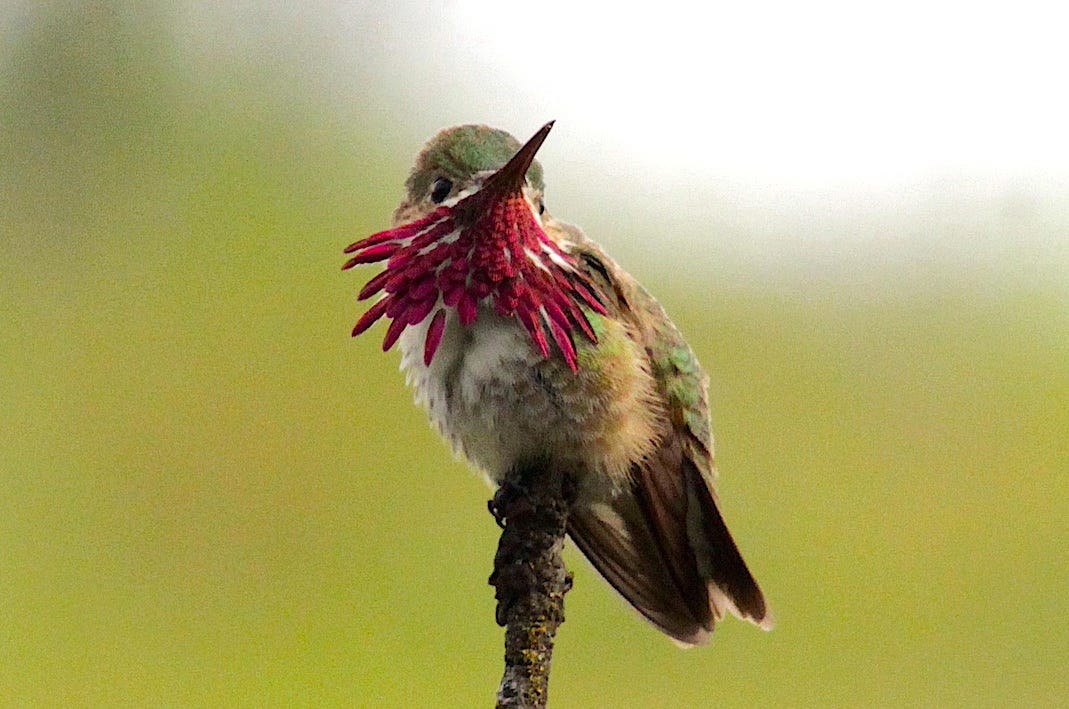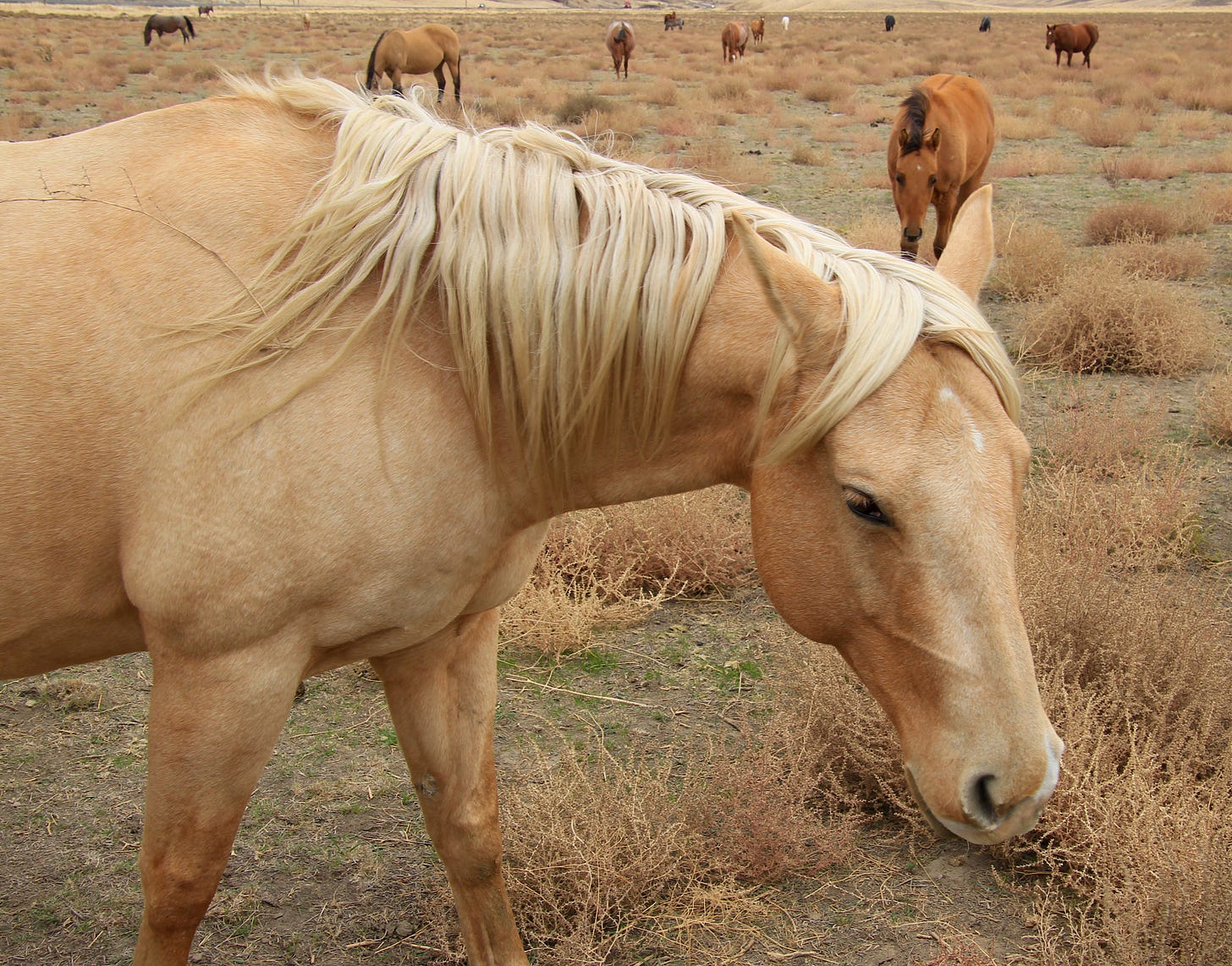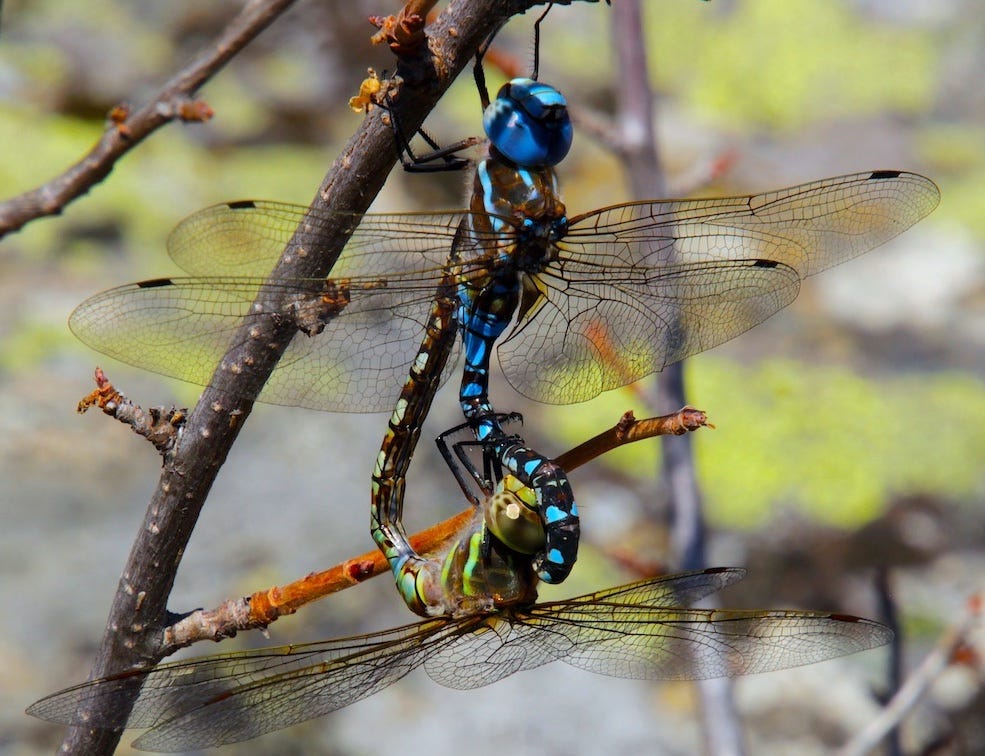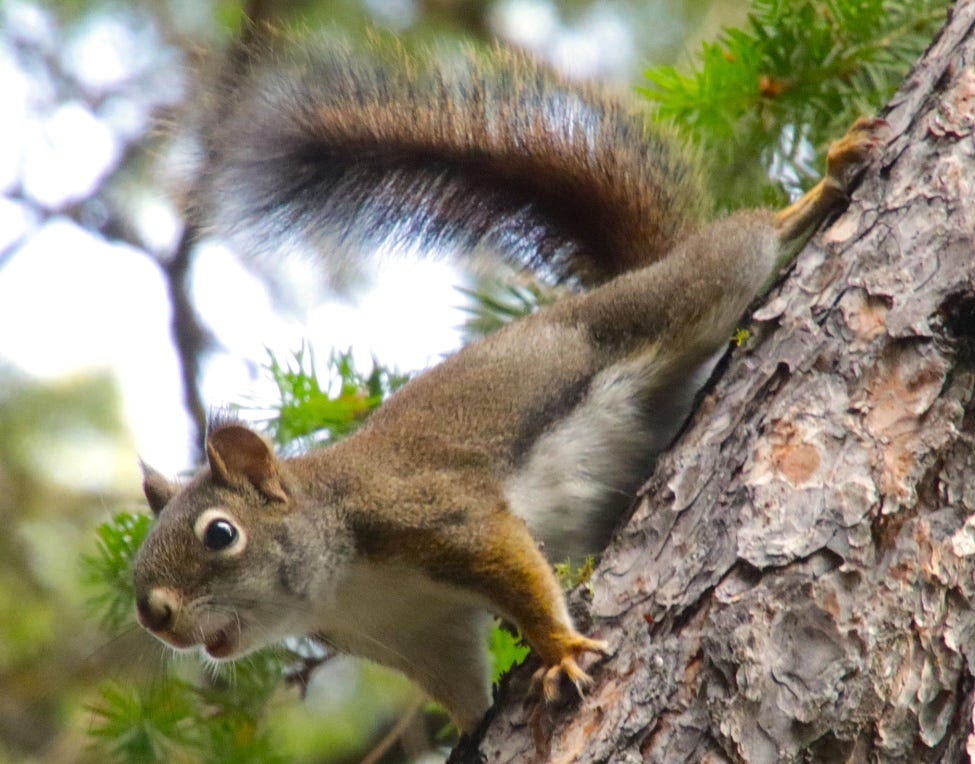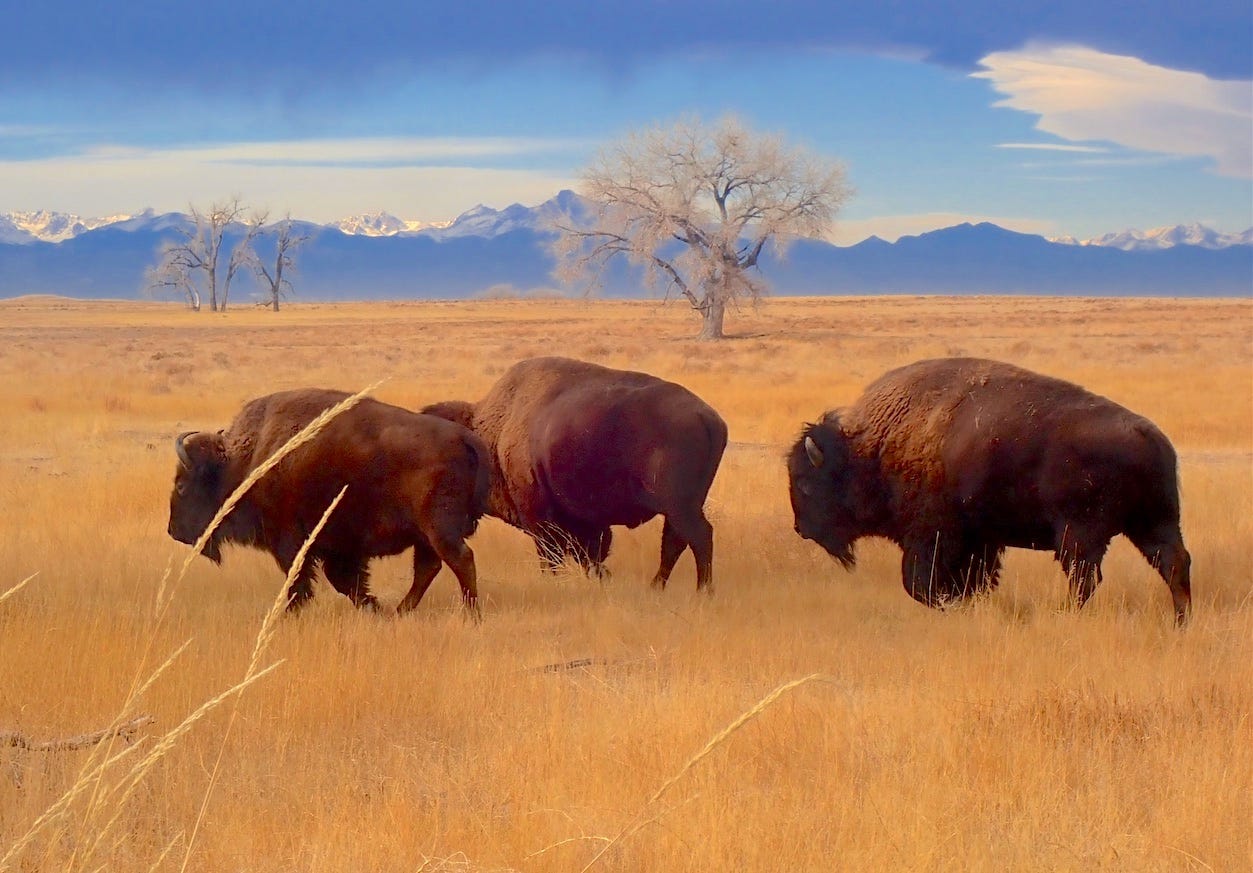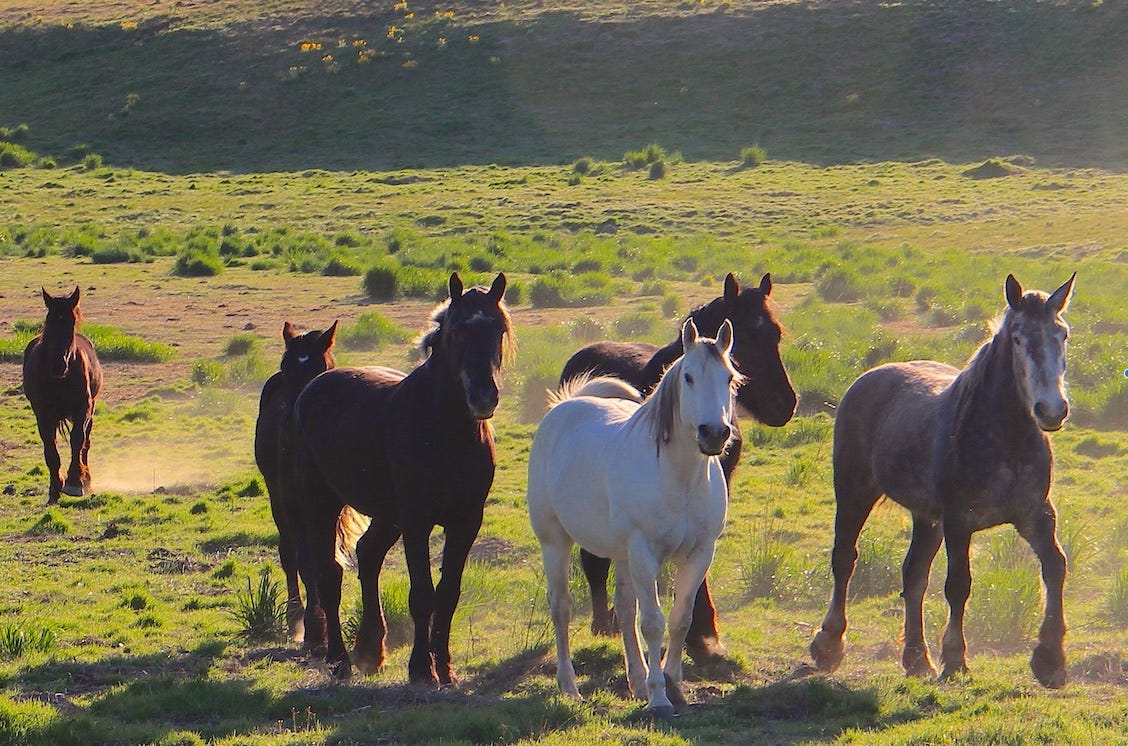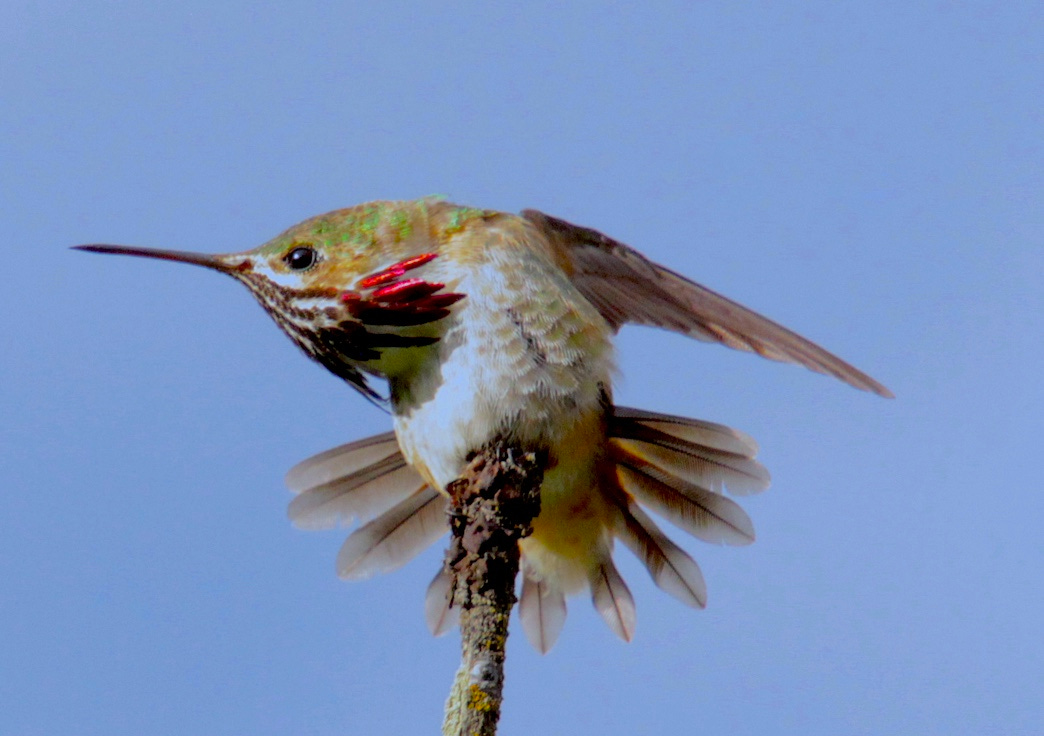Calliope hummingbird, North America’s tiniest bird (1/10 of an ounce)
Apart from the flirtation with poverty, the hardest part of being a writer is feeling time slip by without a legible thought. The ordinary term for it is “writer’s block” but it can feel more like a cement block landing on your foot, or your head. The best part of being a nature photographer is that it is a blessed escape from being a writer and a much different way to experience time.
Time has a different quality in nature that it does at my desk.
Patience is such an integral part of photographing wildlife that no moment feels wasted. Yesterday, I was swimming in a river without a camera, introducing myself to a new group of rather large redband trout, feeding in the rapids, watching how they behave. In time, I’ll be able to identify individual fish (they often have distinctive physical characteristics and favorite hunting spots) so that when I go back to photograph them I’ll at least know I’m doing so with good ideas for how to approach them. It’s a lush, sensory and interactive experience—the very opposite of being still and frustrated for lack of words.
Today’s gallery plays on the scale from the largest to the smallest of the creatures I regularly interact with.
Bull Moose, ~1,000 pounds, or 160,000 Calliope hummingbirds
Young redband trout, in rapids
Horses in Washtucna Coulee
Coiling gopher snake
Beaver in Latah Creek
Mating Blue Darner dragonflies at Willow Lake
American white pelican, with 7-foot wingspans, second only to the California Condor on the size scale of North American birds
Red squirrel
Bison on the range of the Rocky Mountain Arsenal National Wildlife Refuge near Denver
Violet Green Swallow bracing for a landing on a cliff above the Spokane River gorge.
Horses on Jordan—Knott Road, in very rural Whitman County
Bull Moose cooling off in the Spokane River in west Spokane
Calliope hummingbird, with a twist
—tjc



